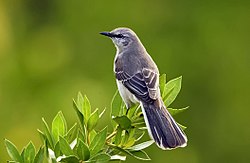Miss Maudie:
At a first glance, Miss Maudie appears to be just a normal next-door-neighbour. A shallow, static character who remains the same throughout the whole story. However, Miss Maudie is in fact a rather dynamic character. Because Scout and Jem's mother has died, she has become a mother figure for the children. To begin with, it's the fact that she bakes cakes for the children. Although this may seem like just a friendly gesture, Miss Maudie goes beyond this. She isn't only there to bake, but also to comfort Jem and Scout. For example, during Jem and Dill's games, in which Scout was excluded from Miss Maudie is there to listen. This is magnified to a great extent in chapter eight, when the children confront Miss Maudie in terms of her burning house. Rather than expressing worried and distressed feelings, she puts on a good face, just like a mother would, trying to protect her children from reality.Scout:
Throughout chapters six, seven, and eight we learn about the great insecurity in Scout that comes from the fact that she's a girl. In chapter six and throughout the entire book, whenever Scout is accused of "gettin' more like a girl everyday!" (page 69) she makes senseless decisions that lead her into bad situations. For example, in chapter six, Jean makes the irrational decision of going to peak into the Radley house. As a result she gets herself in trouble which leads to her downfall. It makes the reader wonder what may happen to the plot, due to this insecurity.
The audience, also notices a growing maturity in Scout as she applies what she learned from Atticus, by saying, "I tried to climb into Jem's skin and walk around in it"(page 77). This shows a positive change in the protagonist, in a society where change is suppressed.
The audience, also notices a growing maturity in Scout as she applies what she learned from Atticus, by saying, "I tried to climb into Jem's skin and walk around in it"(page 77). This shows a positive change in the protagonist, in a society where change is suppressed.
Boo Radley:
In the novel, To Kill A Mocking Bird, Boo Radley is portrayed as a flat character: stereotyped, shallow, and often symbolic. At the beginning of the story the children only perceive Boo Radley as a scary figure, often referred to as a ghost, hence the name "Boo". However, as the plot advances the reader can infer that Boo Radley may not be such a terrifying character after all, but rather a kind spirited person. This is proved valid by his actions, such as putting the presents that interest the children(i.e. gum) in the tree. Thus, creating a friendly connection between Boo and the children.
This may also be Boo Radley's cry for help. He is trying to regain what he never had: a childhood. Everyone is making assumptions about him, except for himself. However, this is him taking a stand, trying to get the children see him for what he really is. In a way, he is voicing his opinions, trying to change how people see him. This could foreshadow what happens in later chapters, someone else will take a stand towards change as well.
Nathan Radley:
The character of Nathan Radley develops in chapter seven. There is the first dialogue in the book with him (between him and Jem). From this dialogue, it is evident to the reader that he is lying about the tree “dying”. We can infer that Nathan is the “villain” rather than Boo, and is in fact depriving Boo from the outside world.

No comments:
Post a Comment